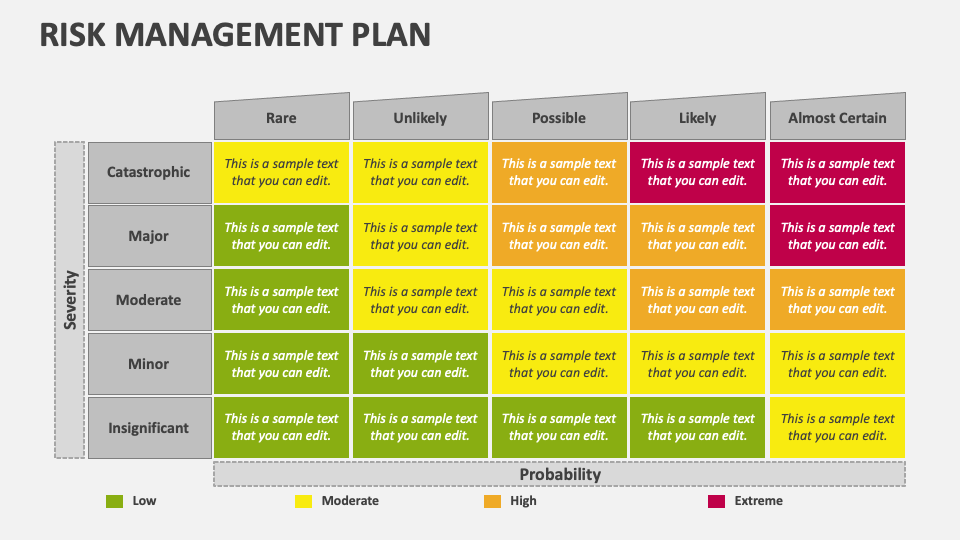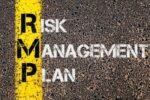
Related Article: Business Management Plan Template
What is project risk management template? This template helps you in making plans for managing the risks faced by the project in excel, you can add any calculation or numerical value as required. This plan template contain all the information of organization’s risk management plan.
An effective risk management template helps to manage the complicated projects and helps to avoid any failure so the project has less risks and become more flexible to give you the proper outcome. This template has many benefits some are mention below:
- This template gives and effective way of handling the project, make the performance consistent.
- It also helps in focusing on objectives of project
- It promises the progress of the project
- This template helps to improve the health of the project
This template is very important for any project and it must be create at initial stages of the project planning. The template can be customized according to your needs.
Now we will discuss the elements of risk template.
Defining the Key Elements:
The risk management plan divides into different elements that help process project risks properly. They are as follows
Analysis of Risk
Once the risk is identify by the experts, it is important to identify whether the risk has qualitative impact or quantitative impact. Then strategies make according to it and a structure matrix is build to deal with such a risk. The only key to success is overcoming these risks. The risk is evaluate by asking the following questions
- What will happen in case of any risk?
- What is the frequency of risk?
- How badly the risks are effecting the project?
By sorting out are these acquires, a risk can be managed very effectively. Risk impact score is also assign to evaluate the risk. This explains the four main thing actually
Assigning the Roles and Responsibilities to the Risk:
Once the risk is identify and analyst all the team members starts their efforts in order to remove the risk. The goals are set and roles and responsibilities are assign to different team members. Keeping in view their abilities and talents. All the measures are adopted for the management of risk and all the efforts are applied in order to make the project successful.
Risk Response
Every action has a reaction, So as soon as a company comes to they are facing the risks that are dangerous for your project the responses are made, They are of main four types
- Avoid
- Accept
- Reduce
- Share
These responses helps you to map out the budget time and scope of the project.
Make a Backup Plan
Team members tries their best to remove the risk but if your project is fail due to the risks. You should have some backup plan to keep going and in the end also measure the risk threshold and discuss it whit the stakeholders and other members of the project.
Risk Mitigation Plan Template:
The risk mitigation plan template includes the options and actions for increasing the opportunities and gives ways for avoiding the threats to your project. It helps in tracking the identify risks, evaluates the new risks and checkout the success of risk management plan template.
So the risk mitigation plan template is also useful for this. If you want read more related this article here is the link : Risk Mitigation Plan
Risk Assessment Plan Template:
Identification and assessment of the risk is very necessary step of the risk management. In this template, you will create a project checklist tailored to your project after interviewing the stakeholders and company experts. A risk assessment plan template repository is create in order to share the risk factors with all the team members as the risk is identify Here is a sample

it may involve different types of risks
- Strategic Risks
- Operational Risks
- Financial Risks
- Organizational Risks
- External Risk
Risk assessment plan template includes the effects, probability, frequency and persistence associated with the risks.
Also Checkout: Product Cost Analysis Template
Best Practices for Creating a Risk Management Plan Template:
Customize the Template to Fit the Project: While this template provides a standardized approach, customize it to fit the project’s specific needs. Adapt the template according to each project’s unique risk profile. This includes tailoring the risk identification process, risk assessment criteria, and mitigation strategies to reflect the unique characteristics of the project. Customization ensures that the risk management plan is relevant and effective in addressing the project’s specific risks.
Involve the Entire Project Team: Risk management should not be the sole responsibility of the project manager. Involving the entire project team in the risk management process leads to better identification and assessment of risks. Team members with different expertise and perspectives can provide valuable insights into potential risks and help develop effective mitigation strategies. Involving the team also strengthens their commitment to the risk management plan and aligns everyone in their approach to managing risks.
Related Article: Project Risk Register Template
Regularly Review and Update the Plan: A Risk Management Plan Template should not be a static document. Regularly review and update it to reflect changes in the project, new risks that emerge, and the effectiveness of mitigation strategies. Regular reviews help ensure that the plan remains relevant and effective throughout the project lifecycle. Project managers should schedule regular risk review meetings and update the risk register and mitigation strategies as needed.
Use Data-Driven Risk Assessment: Effective risk assessment requires accurate and reliable data. Project managers should use data-driven approaches to assess the likelihood and impact of risks. This includes analyzing historical data from similar projects, consulting industry benchmarks, and using risk modeling techniques. Data-driven risk assessment provides a more objective and accurate evaluation of risks, which supports better decision-making and more effective risk mitigation strategies.
Integrate Risk Management with Project Management Processes: Treat risk management as part of the overall project management processes; integrate it fully. This includes incorporating risk management into project planning, scheduling, budgeting, and resource allocation. Integrating risk management with other project management processes ensures that project managers address risks in a coordinated and comprehensive manner. This integration also helps avoid conflicts between risk mitigation strategies and other project objectives.
Related Article: RACI Matrix Template
Document Lessons Learned: Every project presents an opportunity to learn from experience. Project managers should document the lessons learned from risk management activities, including what worked well and what could be improved. This information can be used to refine the template for future projects and to improve the organization’s overall risk management practices. Documenting lessons learned also helps build a knowledge base that can be shared with other project teams.
Communicate Risk Management Activities to Stakeholders: Keeping stakeholders informed about risk management activities is crucial for maintaining their confidence and support. Project managers should regularly communicate the status of risks, the effectiveness of mitigation strategies, and any changes to the risk management plan. Transparent communication helps build trust with stakeholders and ensures that they are aware of the project’s risk landscape. It also provides an opportunity to solicit feedback and suggestions from stakeholders, which can further improve the risk management plan.
Conclusion:
In short, a well-crafted Risk Management Plan Template is a vital tool for ensuring the success of any project.


